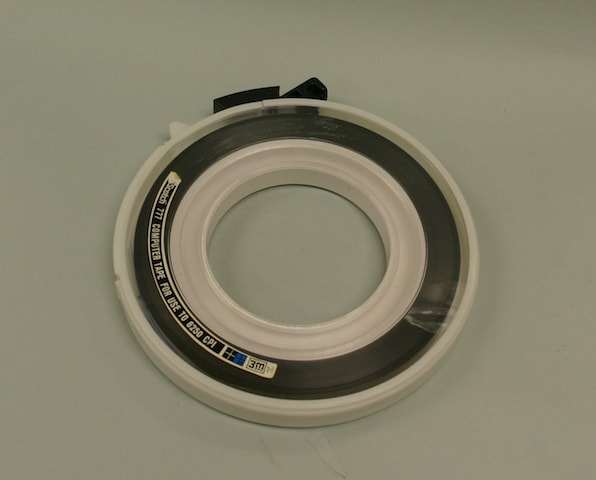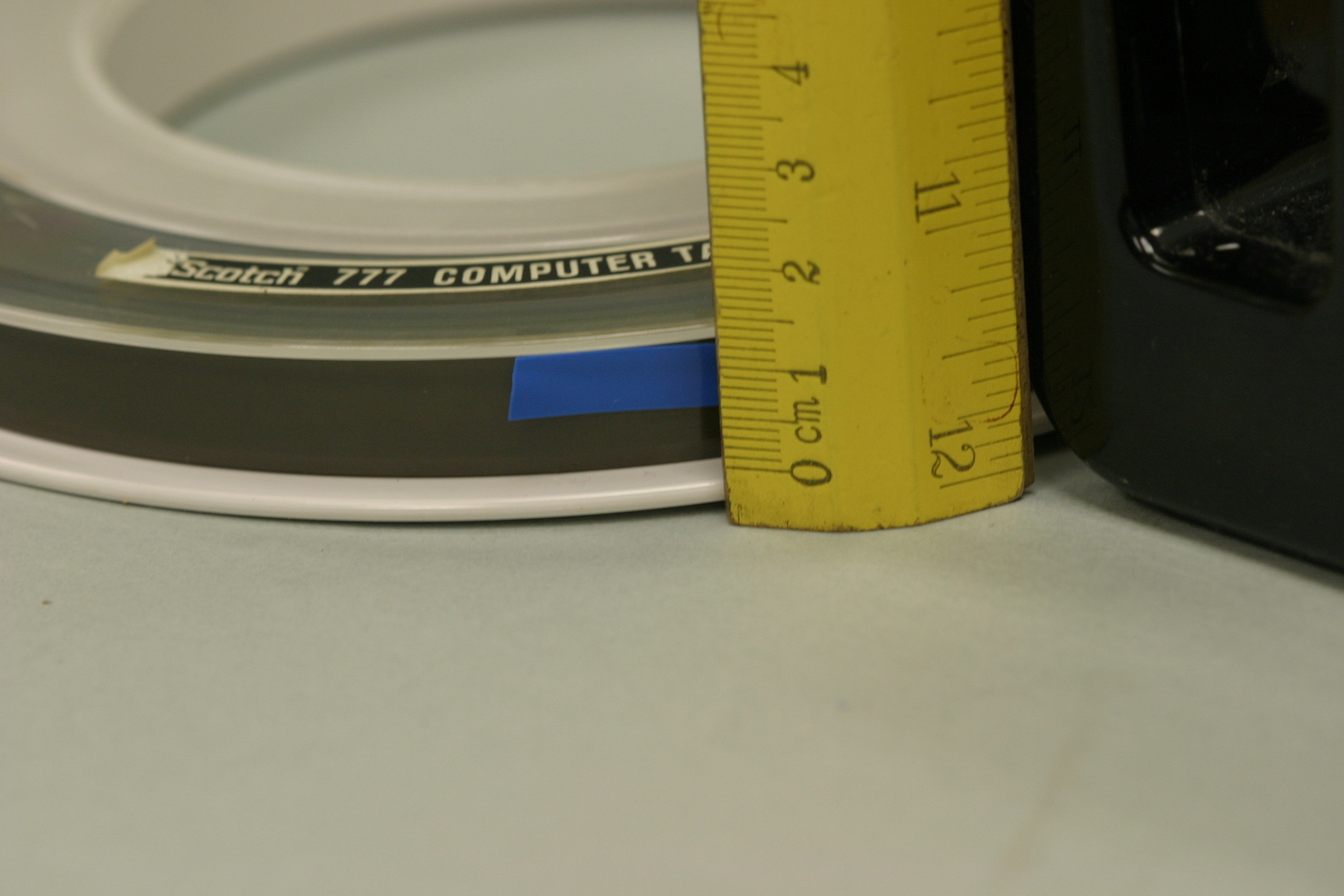The 8 inch floppy disk (or diskette) composed of a disk of thin and flexible magnetic storage medium, sealed in a rectangular dust-proof plastic case lined with fabric. It was introduced by IBM in 1971 to the market as an inexpensive way to load data into the IBM System/370. The floppy disk had a magnetic disk inside a case with a hole in the middle and was used with a dedicated disk drive capable of reading the magnetic data from the disk.
The very first model was a read-only bare disk (the ‘Memory Disk’) holding 80 KB of data only. The first read-write version was introduced in the year of 1972 by Memorex which could hold 175 KB on 50 tracks. It was hard-sectored and had 8 sector holes (and an index hole) on the outer diameter.
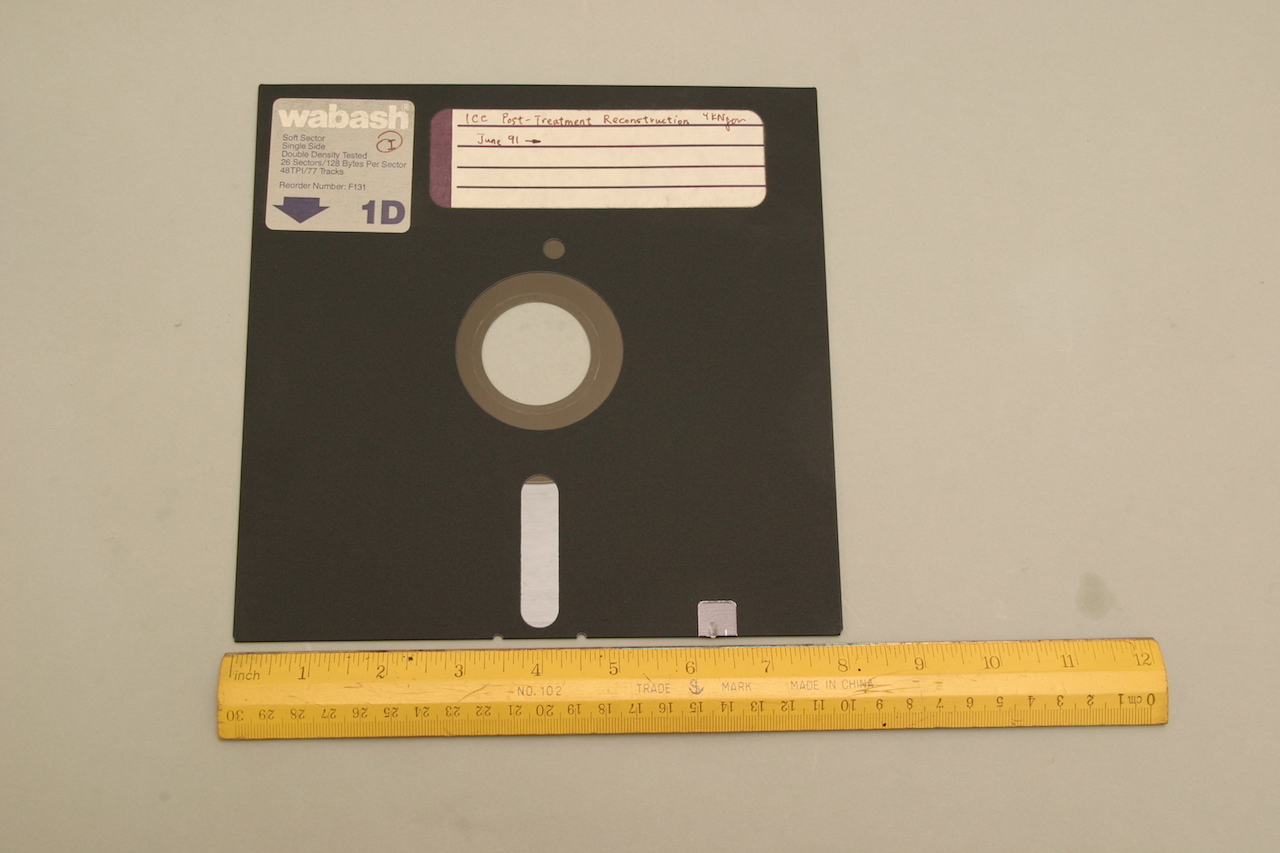
Because of its lower price and smaller size, the 5.25-inch floppy disk quickly replaced its predecessor.
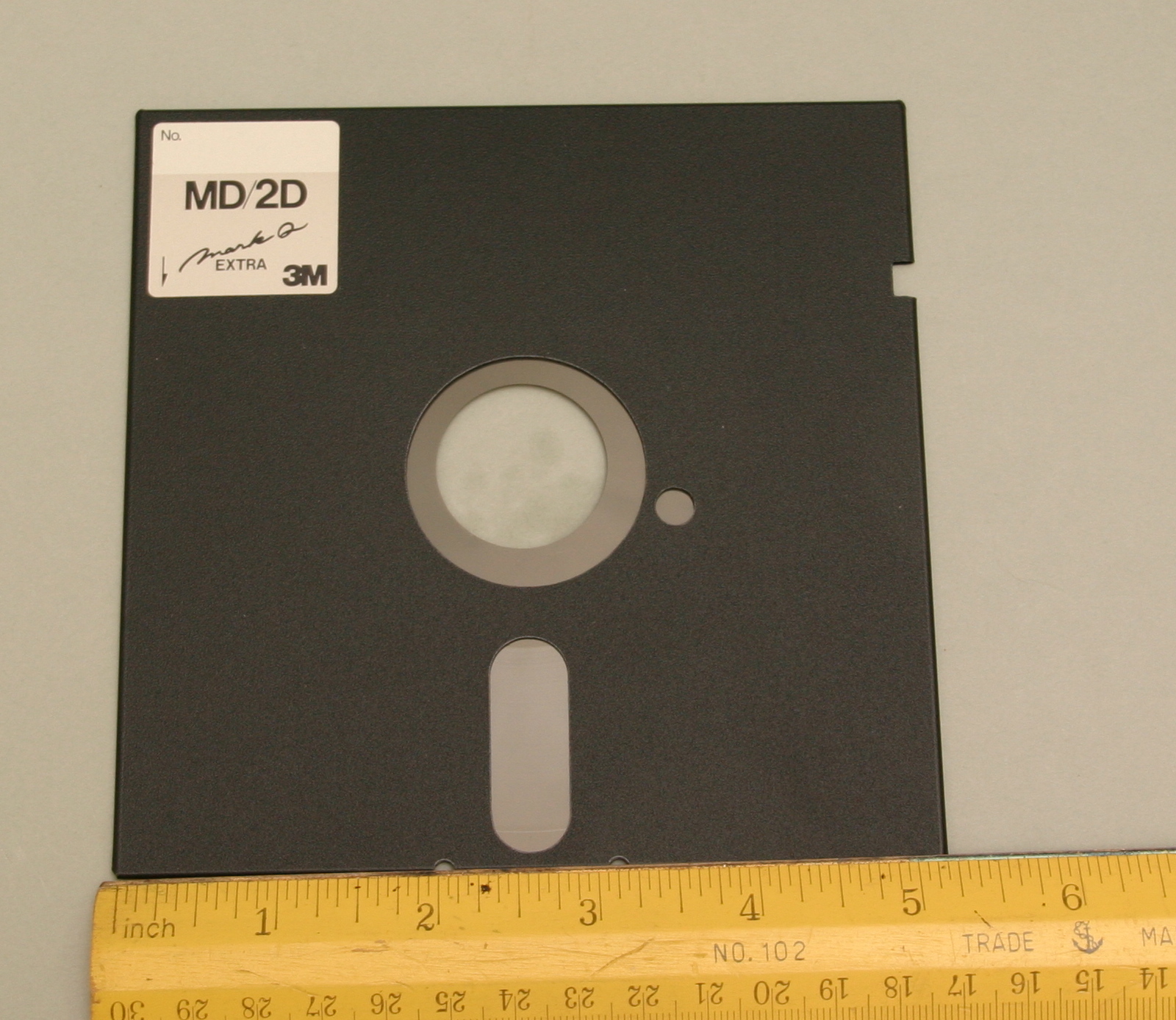

The 3.5-inch floppy disk size was introduced in the 1980s. The early models supported sizes up to 360 KB and 720 KB, and then 1.44 MB in the later model. Just like 8-inch and 5.25-inch floppies, 3.5-inch floppies are divided into tracks and sectors for locating data. The disk can be double-sided and is encased in a plastic case with a medal cover to protect it from dirt and fingerprints. A sliding tab in the corner of the case is used to write-protect the disk. Because of the compact size, the use of 3.5-inch disks soon spread to other systems, including the Commodore Amiga, the Atari ST and the other IBM-PC clone, and became the standard for both transferring files and distributing software from the late ‘80s through the late ‘90s.
3.5-inch floppy disks are replaced by optical media, USB drives and cloud storage now, though they can be found in some old industrial computer systems. Although 3.5-inch floppies are already legacy products, they are commonly “used” as the SAVE icons in many programs.
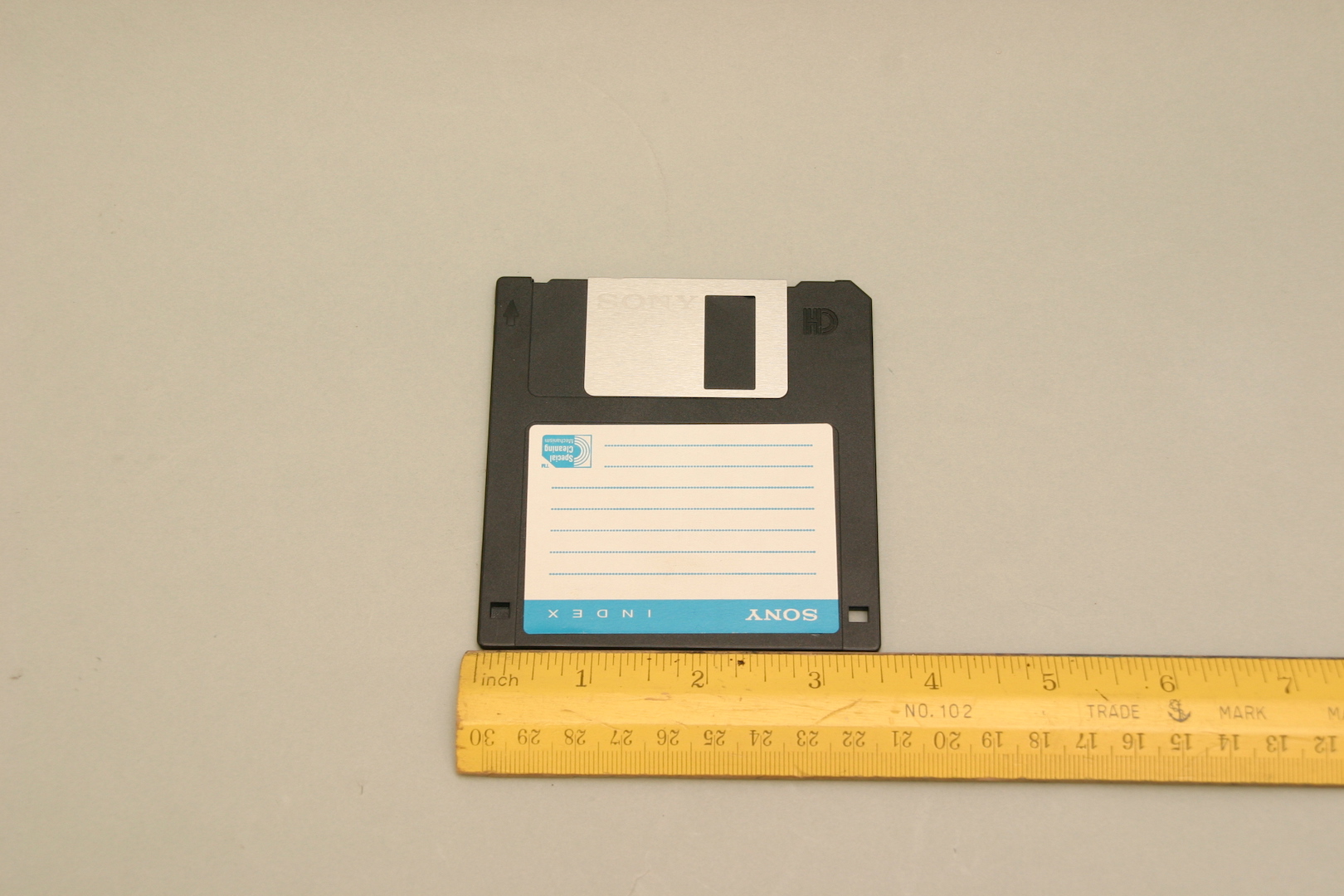

A Zip drive is a medium-capacity and portable magnetic disk storage system launched by Iomega in the mid-1990s. It was popular at the time of launch as cost per storage unit was lower than that of hard disks, and it could store a larger amount of data than a floppy disk. The Zip drive was capable of fast data transfer and was durable and reliable. The rise of other devices that later came to market, such as USB drives, were favored over the Zip drive and Zip disk, and these became obsolete soon afterward.
The Zip drive was available in 100- and 250-MB capacities. The initial versions of the drive could be connected to a computer by means of a parallel, SCSI or IDE port. The later versions had a USB interface and were thus simple to connect, being plug and play. The Zip drive was PC and Mac compatible and came with a manual and related software that provided ease-of-use features. The drive installed itself on a computer and would be assigned a new drive letter to distinguish itself from other drives. It could handle high-capacity Zip disks and had a large drive slot to fit the disks. The Zip drive also contained a retro-reflective spot for identifying the proper disk media in order to prevent damage to the disk and drive.
At the height of its popularity, the Zip drive was considered a larger version of the floppy drive and certain manufacturers included Zip drives internally in their devices. It was favored in the graphic arts vertical market and was also economical for home users at the time of launch for storing large data. Zip drives were reportedly prone to click-of-death failures, which potentially resulted in media and data loss.

A magneto-optical disk is a rewritable disk that makes use of both magnetic disk and optical technologies. It is similar to a magnetic diskette except for its larger size. Magneto-optical disks are seldom manufactured and used due to the advent of flash drives and DVD/CD drives, which are less expensive and have better writing time and reliability. Magneto-optical disks are also known as magneto-optical drives and MO drives.
One of the most well-known examples of a magneto-optical disk is the Sony MiniDisc. The magneto-optical disk has the following features: It is capable of having high data intensity by means of a magnetic read/write head and a laser. Like diskettes, the magneto-optical disk allows multiple rewrites. The driver for a magneto-optical disk can verify the information written to the disk and will report any errors to the operating system. This often results in faster reading but slower writing, although it helps make data storage more reliable. The magneto-optical disk is a special removable disk. The design of the drive allows the inserted disk to be exposed to the magnetic head on one side and to the laser on the other side. Its writing speed is faster than that of diskettes, but is slower than that of CD/DVD drives. Convenience and reliability are much better than those of diskettes, along with high data capacity.

The displayed 4mm data tape is the 4th generation of digital data storage (DDS-4). DDS-4 stores up to 20 GB uncompressed (40 GB compressed) on a 150 m cartridge. This format is also called DAT 40.
Digital Data Storage (DDS) is a computer data storage technology that is based upon the digital audio tape (DAT) format that was developed during the 1980s. DDS is primarily intended for use as off-line storage, especially for generating backup copies of working data.
A DDS cartridge uses tape with a width of 3.81mm, with the exception of the latest formats, DAT-160 and DAT-320, both which use 8mm wide tape. Initially, the tape was 60 meters (197 feet) or 90 meters (295 ft.) in length. Advancements in materials technology have allowed the length to be increased significantly in successive versions. A DDS tape drive uses helical scan recording, the same process used by a video cassette recorder (VCR).
Backward compatibility between newer drives and older cartridges is not assured; the compatibility matrices provided by manufacturers will need to be consulted. Typically drives can read and write tapes in the prior generation format, with most (but not all) also able to read and write tapes from two generations prior. Notice in HP's article that newer tape standards do not simply consist of longer tapes; with DDS-2, for example, the track was narrower than with DDS-1.


8 mm Backup Format is a magnetic tape data storage format used in computer systems, pioneered by Exabyte Corporation. It is also known as Data8, often abbreviated to D8 and is written as D-Eight on some Sony branded media. Such systems can back up to 60 GB of data depending on configuration. The tapes used are mechanically the same as the tapes used in 8mm video format recorders and camcorders.
Until the advent of AIT, Exabyte were the sole vendor of 8 mm format tape drives. The company was formed with the aim of taking the 8 mm video format and making it suitable for data storage. They did so by building a reliable mechanism and data format that used the common 8 mm helical scan video tape technology that was available then.
Exabyte's first 8 mm tape drive was made available in 1987. This was followed up with their Mammoth tape drive in 1996, and the Mammoth-2 (M2) in 1999. Exabyte's drive mechanisms were frequently rebranded and integrated into UNIX systems.


The Compact Audio Cassette (CAC) or Musicassette (MC), also commonly called the cassette tape or simply tape or cassette, is an analog magnetic tape recording format for audio recording and playback. Released by Philips in 1963, it has been developed in Hasselt, Belgium. Compact cassettes come in two forms, either already containing content as a prerecorded cassette, or as a fully recordable "blank" cassette. Both forms are reversible by the user.
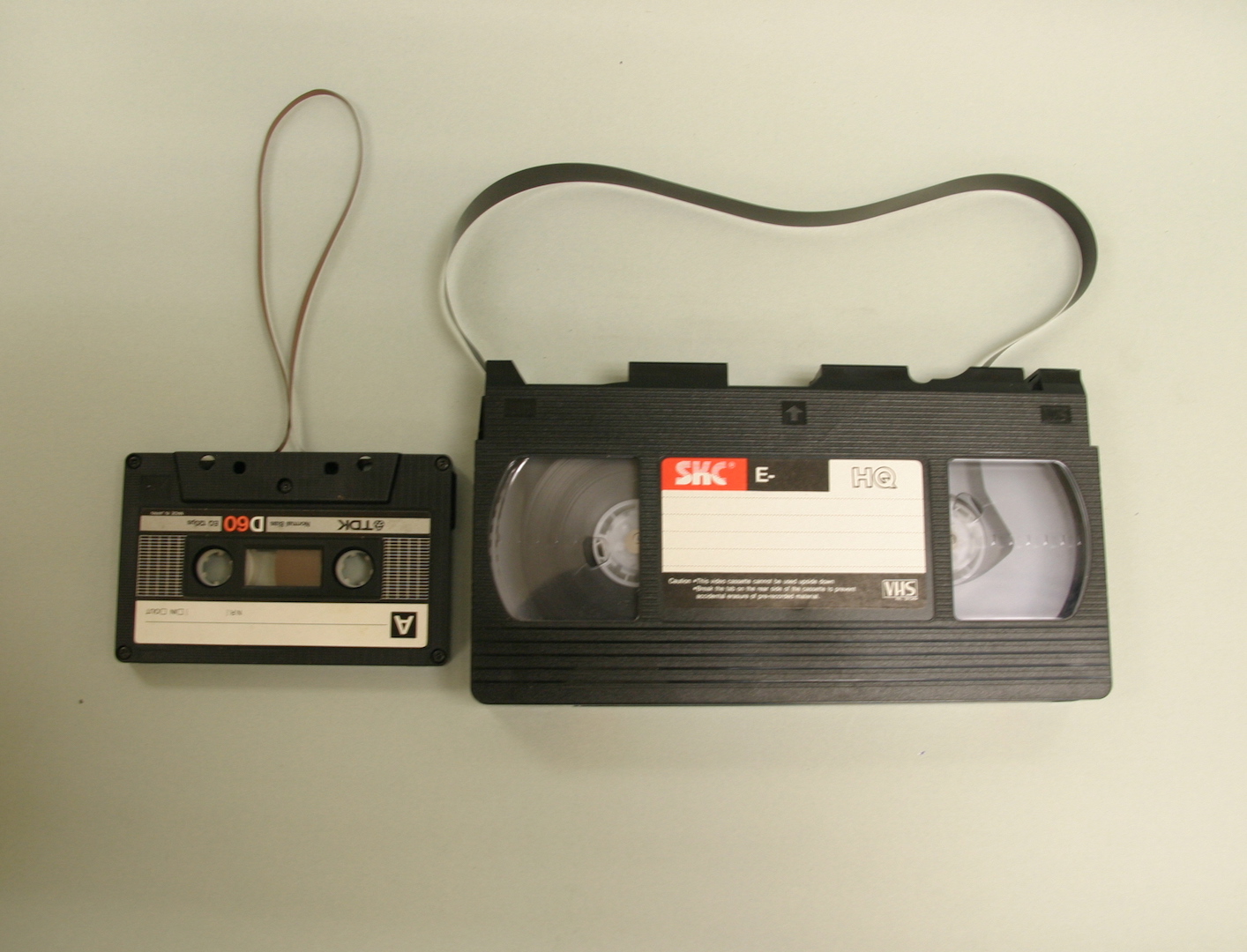
This is the first generation of magnetic storage tape that is wound on large open (10.5 in/26.67 cm) reels. Open reel tape is a magnetic tape format for audio where the tape is not enclosed in a cartridge or cassette, but held on a reel or spindle and threaded manually through the tape head assembly and attached to a take-up reel. Tape generally runs at 15 or 30-inches per second.
Magnetic tape was first developed in the 1930s in Germany, and after the war the technology was taken to America by Jack Mullin and developed commercially by Ampex with investment from Bing Crosby. The first commercial tape recorder (the Ampex Model 200) was released in 1948. Open reel tape recorders for domestic and educational use become available by the late 1940s.
Initially, tape was ¼-inches wide and used a single track. Over the years, multitrack recording become common, and by 1968, up to 24 tracks could be recorded onto 2-inch wide tape. The 2-inch 24-track tape reel became the most common format in professional recording studios throughout most of the 1970s and 1980s, but other widths (¼-inch, ½-inch and 1-inch) were also available.
Open reel tape recording was main recording format used by professional recording studios until the late 1980s when digital audio recording techniques began to allow the use of other types of media (such as Digital Audio Tape (DAT) and hard disks). Tape is still used by some recording studios, often to record digital tracks to, to effect a ‘natural’ and ‘warmer’ sound.
